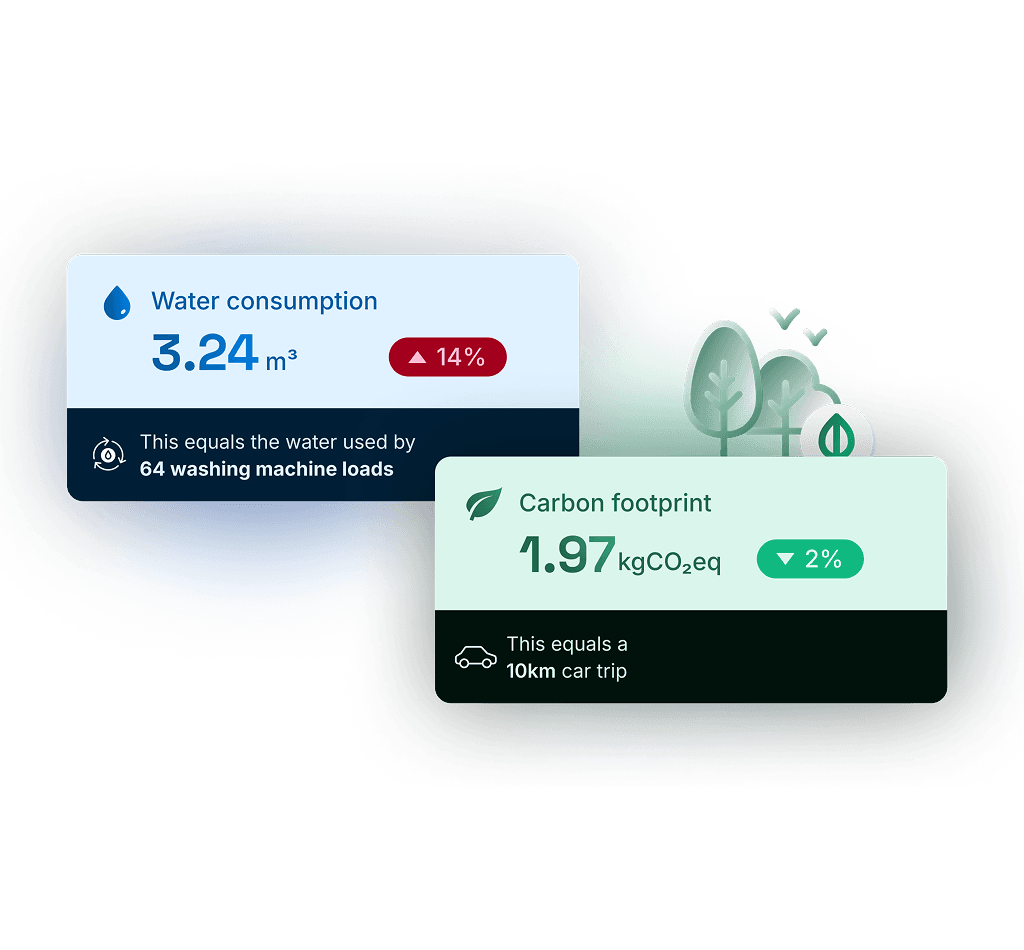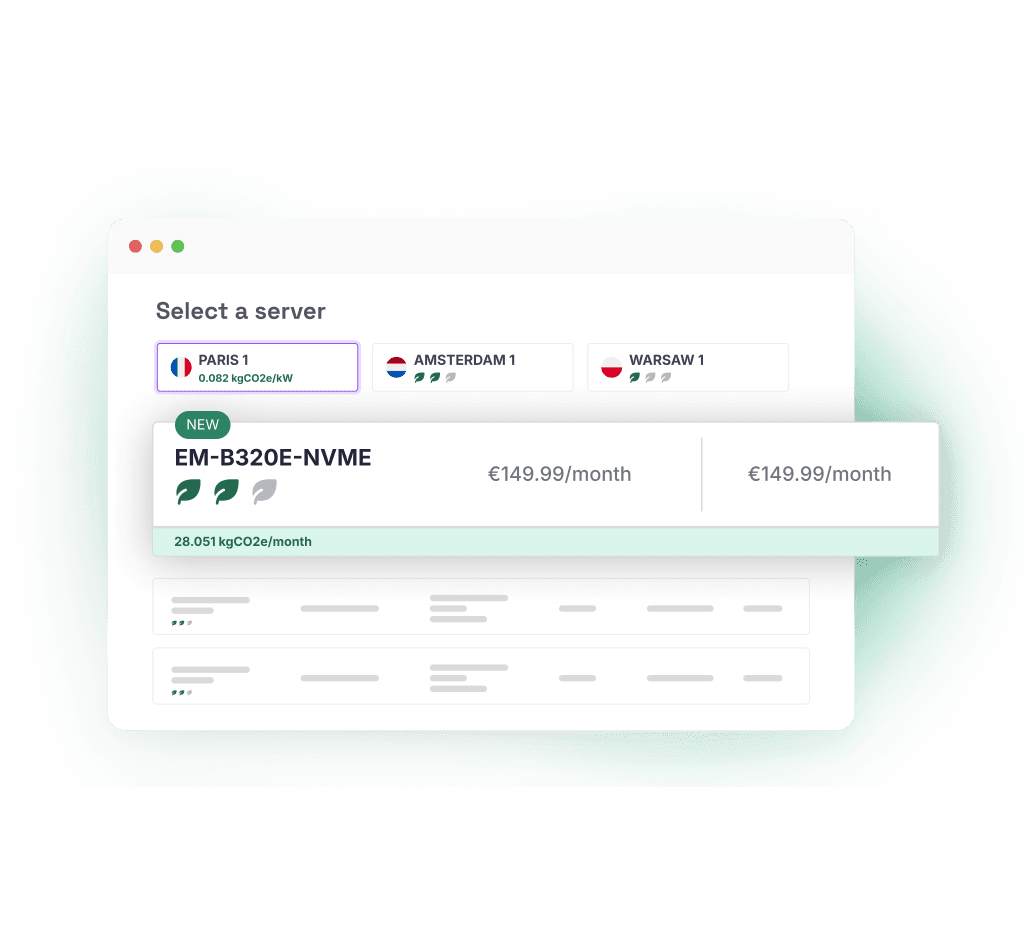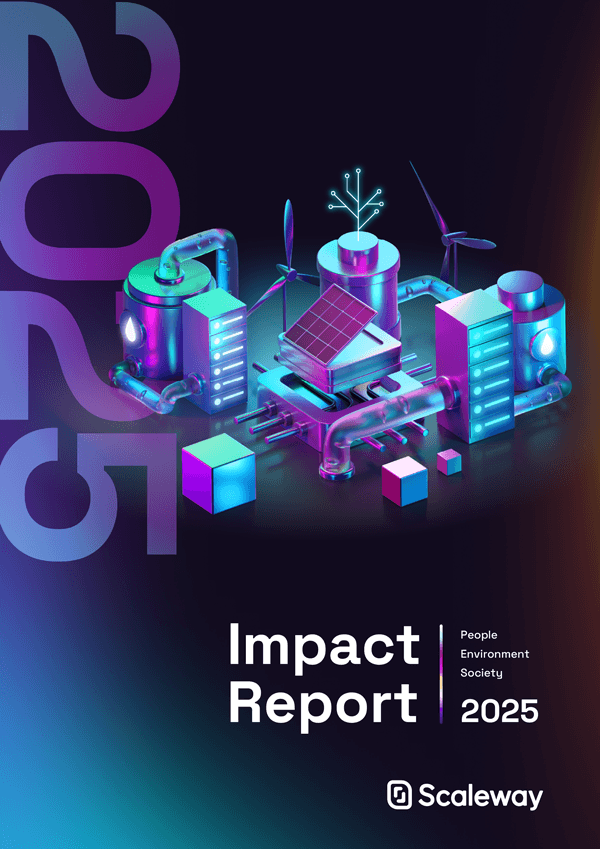Monitor real usage — not estimates
Access accurate, daily-updated data on your cloud footprint, broken down by product, region, and project. Not generalized averages but real, granular metrics (e.g., carbon emissions in kgCO₂e and water usage in m³ of water) based on your actual usage. View your impact via monthly reports or integrate it directly into your systems via API.







